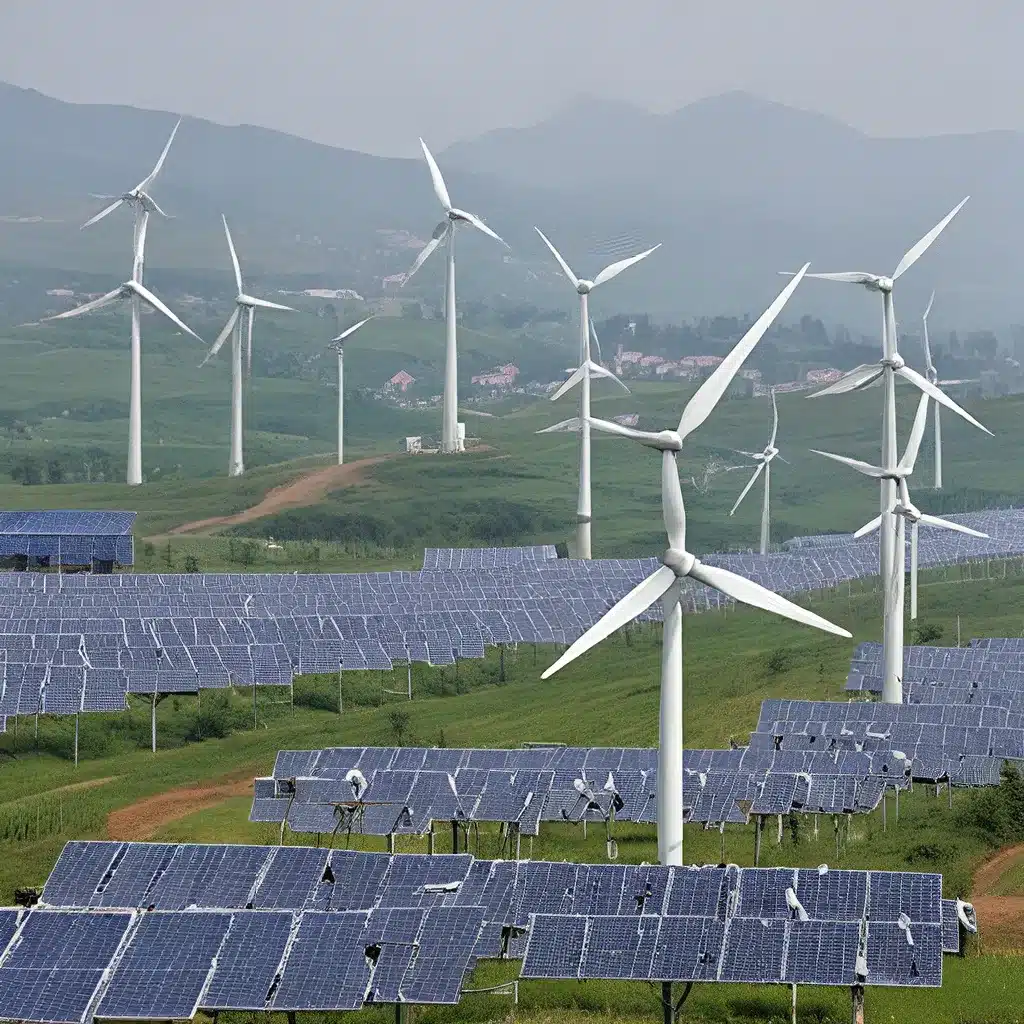
As we grapple with the pressing challenge of climate change, the transition to a clean, renewable energy future has never been more critical. Renewable energy policies play a crucial role in driving this transformation, unlocking innovative solutions and empowering communities to take control of their energy needs. Let me take you on a journey through this dynamic landscape, exploring the triumphs and the trials, the policies that are shaping our sustainable tomorrow.
The Renewable Energy Revolution
I remember the first time I witnessed the awe-inspiring sight of a wind turbine, its blades gracefully cutting through the air, harnessing the power of nature to generate clean, limitless energy. It was a moment that sparked my fascination with the renewable energy revolution and the incredible potential it holds.
From the sprawling solar farms that dot the landscape to the cutting-edge advancements in geothermal and hydroelectric power, the renewable energy landscape is constantly evolving, driven by bold policies and innovative minds. As I delve into this topic, I’m continuously amazed by the ingenuity and dedication of the individuals and organizations working tirelessly to redefine our energy landscape.
Recent research has highlighted the critical role that renewable energy policies play in fostering sustainable energy solutions. These policies, ranging from tax incentives and feed-in tariffs to renewable portfolio standards and net-metering programs, are the catalysts that ignite the transformation we so desperately need.
Incentivizing the Clean Energy Transition
One of the most powerful tools in the renewable energy policy arsenal is the use of financial incentives. Tax credits, rebates, and grants have proven to be effective in driving investment and adoption of clean energy technologies. By making it more financially viable for individuals and businesses to go green, these policies unlock the true potential of renewable energy.
Take the solar energy industry, for example. Studies have shown that the implementation of solar tax credits and other incentives has led to a remarkable surge in solar installations across the United States. This has not only reduced our reliance on fossil fuels but has also created countless green jobs in the solar sector, fueling economic growth and strengthening local communities.
But the impact of renewable energy policies extends far beyond financial incentives. Renewable portfolio standards, which require utilities to source a certain percentage of their electricity from renewable sources, have been instrumental in driving the deployment of wind, solar, and other clean energy technologies. These policies have been adopted by numerous states, including North Carolina, where they have played a significant role in the state’s transition to a more sustainable energy future.
Empowering Communities and Consumers
The true power of renewable energy policies lies in their ability to empower local communities and individual consumers. Net-metering programs, for instance, allow homeowners and businesses with solar panels to sell their excess energy back to the grid, effectively turning them into active participants in the energy ecosystem.
This democratization of energy has profound implications, as it enables individuals to take control of their energy consumption and contribute to the broader renewable energy transition. Imagine a future where every rooftop is adorned with solar panels, feeding into a decentralized, resilient grid that puts the power of clean energy in the hands of the people.
But the impact of renewable energy policies extends far beyond individual homes and businesses. Community solar projects and cooperative energy initiatives are springing up across the country, providing access to affordable, renewable energy for those who may not have the resources or the ability to install their own solar panels.
Overcoming Challenges and Embracing the Future
Of course, the journey to a sustainable energy future is not without its challenges. Policymakers and industry leaders must navigate complex regulatory landscapes, balance competing interests, and address issues like grid integration, storage, and the equitable distribution of renewable energy benefits.
Yet, even in the face of these obstacles, I am optimistic about the future. The renewable energy revolution is gaining momentum, driven by the passion and ingenuity of those who recognize the urgent need for change. As new technologies emerge and innovative business models take root, the possibilities for a clean, sustainable energy future grow ever more promising.
Firewinder, for example, has been at the forefront of this movement, offering cutting-edge renewable energy solutions that empower communities and drive the transition to a more sustainable tomorrow. Their work is a testament to the transformative power of renewable energy policies and the individuals who are dedicated to putting them into practice.
As I contemplate the path ahead, I am reminded of the words of the renowned physicist, Niels Bohr: “Prediction is very difficult, especially if it’s about the future.” Yet, I believe that with the right renewable energy policies in place, we can shape a future that is not only sustainable but also dynamic, innovative, and empowering for all.
So, let us continue to explore, experiment, and embrace the renewable energy revolution. For it is in this pursuit that we will uncover the solutions that will light the way to a brighter, greener tomorrow.

